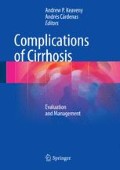Abstract
The multifunctional and complex nature of the liver is reflected in the severity of physiological derangement that occurs in liver failure. Effective treatment modalities outside of liver transplantation are lacking; however, the shortage of suitable organs for transplantation, the high mortality of liver failure without transplantation, and the morbidity and mortality associated with transplantation have provided the impetus to develop an effective liver support device. The quest for such device(s) has been ongoing for more than 50 years, focusing on approaches based on cell-based (bio-artificial), cell-free (artificial), or a combination of the two systems. Bio-artificial devices aim to replace the whole gamut of liver functions (synthesis, biotransformation, detoxification, and excretion) through the use of cultured hepatocytes, whereas artificial devices predominantly employ blood purification and detoxification strategy through processes targeting albumin-based dialysis and the use of adsorbents. While the safety of these systems, and their capacity to achieve significant clearance of toxins, has been proven in animal and human studies, the evidence of mortality benefit is yet to be established. This chapter describes currently available liver support systems, their operational characteristics, limitations, evidence of clinical efficacy, and prospects for future development.
Access this chapter
Tax calculation will be finalised at checkout
Purchases are for personal use only
References
Mathers C, Fat D, Boerma J. The global burden of disease: 2004 update. Geneva: World Health Organisation; 2008.
Transplant Acitvity in the UK. Report 2010/2011: Statistics and Clinical Audit. In: NHS Blood and Transplant; 2011.
Carpentier B, Gautier A, Legallais C. Artificial and bioartificial liver devices: present and future. Gut. 2009;58(12):1690–702.
Kimoto S. The artificial liver experiments and clinical application. Asaio J. 1959;5(1):102–12.
Matsumura KN, Guevara GR, Huston H, Hamilton WL, Rikimaru M, Yamasaki G, et al. Hybrid bioartificial liver in hepatic failure: preliminary clinical report. Surgery 1987;101(1):99–103.
Klebanoff G, Hollander D, Osteen RT, Kemmerer WT. Human-baboon cross circulation in hepatic failure: report of a successful case. Mil Med. 1973;138(3):156–9.
Silva YJ, Parameswaran PG, James P. Exchange transfusion and major surgery in acute hepatic failure. Surgery 1976;80(3):343–9.
Eiseman B, Liem DS, Raffucci F. Heterologous liver perfusion in treatment of hepatic failure. Ann Surg. 1965;162(3):329–45.
Jalan R, Schnurr K, Mookerjee RP, Sen S, Cheshire L, Hodges S, et al. Alterations in the functional capacity of albumin in patients with decompensated cirrhosis is associated with increased mortality. Hepatology 2009;50(2):555–64.
Caironi P, Tognoni G, Masson S, Fumagalli R, Pesenti A, Romero M, et al. Albumin replacement in patients with severe sepsis or septic shock. N Engl J Med. 2014;370(15):1412–21.
Finfer S, Bellomo R, Boyce N, French J, Myburgh J, Norton R. A comparison of albumin and saline for fluid resuscitation in the intensive care unit. N Engl J Med. 2004;350(22):2247–56.
Jalan R, Sen S, Williams R. Prospects for extracorporeal liver support. Gut. 2004;53(6):890–8.
Nyberg SL. Bridging the gap: advances in artificial liver support. Liver Transplant. 2012;18 Suppl 2:S10–4.
Stadlbauer V, Davies NA, Sen S, Jalan R. Artificial liver support systems in the management of complications of cirrhosis. Semin Liver Dis. 2008;28(1): 96–109.
Demetriou AA, Brown RS, Jr., Busuttil RW, Fair J, McGuire BM, Rosenthal P, et al. Prospective, randomized, multicenter, controlled trial of a bioartificial liver in treating acute liver failure. Ann Surg. 2004;239(5):660–7; discussion 667–70.
Ellis AJ, Hughes RD, Wendon JA, Dunne J, Langley PG, Kelly JH, et al. Pilot-controlled trial of the extracorporeal liver assist device in acute liver failure. Hepatology 1996;24(6):1446–51.
Banares R, Nevens F, Larsen FS, Jalan R, Albillos A, Dollinger M, et al. Extracorporeal albumin dialysis with the molecular adsorbent recirculating system in acute-on-chronic liver failure: the RELIEF trial. Hepatology. 2013;57(3):1153–62.
Saliba F, Camus C, Durand F, Mathurin P, Letierce A, Delafosse B, et al. Albumin dialysis with a noncell artificial liver support device in patients with acute liver failure: a randomized, controlled trial. Ann Intern Med. 2013;159(8):522–31.
Kribben A, Gerken G, Haag S, Herget-Rosenthal S, Treichel U, Betz C, et al. Effects of fractionated plasma separation and adsorption on survival in patients with acute-on-chronic liver failure. Gastroenterology. 2012;142(4):782–789e3.
Rademacher S, Oppert M, Jorres A. Artificial extracorporeal liver support therapy in patients with severe liver failure. Expert Rev Gastroenterol Hepatol. 2011;5(5):591–9.
Vaid A, Chweich H, Balk EM, Jaber BL. Molecular adsorbent recirculating system as artificial support therapy for liver failure: a meta-analysis. Asaio J. 2013;58(1):51–9.
Author information
Authors and Affiliations
Corresponding author
Editor information
Editors and Affiliations
Rights and permissions
Copyright information
© 2015 Springer International Publishing Switzerland
About this chapter
Cite this chapter
Bangash, M., Agarwal, B., Jalan, R. (2015). Liver Support Systems. In: Keaveny, A., Cárdenas, A. (eds) Complications of Cirrhosis. Springer, Cham. https://doi.org/10.1007/978-3-319-13614-1_26
Download citation
DOI: https://doi.org/10.1007/978-3-319-13614-1_26
Published:
Publisher Name: Springer, Cham
Print ISBN: 978-3-319-13613-4
Online ISBN: 978-3-319-13614-1
eBook Packages: MedicineMedicine (R0)

